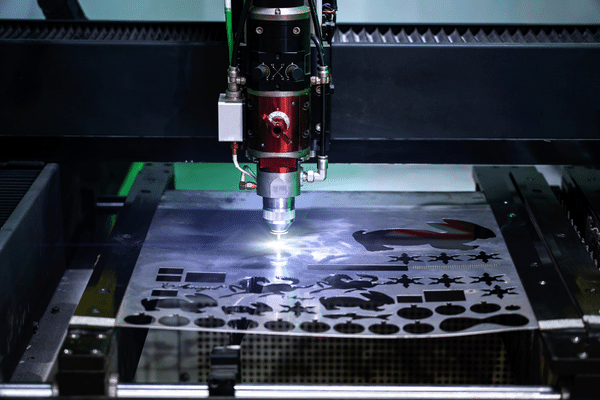When setting up a CNC machining center, there are many best practices you need to follow. If you don’t, you could damage the machine or tooling, hurt yourself and others, or negatively impact your production rates.
Designing with tolerance in mind
Design with tolerance will ensure your product is high quality and free of problems. There are many parts to a CNC machining process that are all very important. From the design phase through manufacturing, there are certain things you should consider during the entire fabrication process. One area that is often overlooked is tolerances. Tolerances are critical to products that require assembly. If the tolerance is too tight, the piece will be difficult to assemble, and the components will likely have a rough fit that might cause breakage or failure. If it’s too loose, the components will not fit properly or have excess space between them. You don’t want either of these issues to arise when your product goes into production, so let’s look at some best practices to keep in mind when designing for tolerance.

Creating the right tool bits
When using CNC machines, you must create the right tool bits before starting a job. This means using the right material for your cutters and ensuring they’re sharpened correctly so they’ll perform as expected while cutting through your material.
For example, suppose you’re cutting aluminum with carbide-tipped tool bits. In that case, they should be balanced with an appropriate amount of negative rake angle, so they don’t get stuck in the workpiece or cause poor results from their cutting edges because they’re digging into rather than sliding across the material’s surface being cut. If you’re working with harder materials such as steel or cast iron, then carbide-tipped tools will.

Ensuring your tools are sharp
When it comes to CNC machining best practices, the first thing that comes to mind is ensuring your tools are sharp. Dull tools can lead to excessive tooling wear and poor quality parts. This is because dull tools don’t cut as cleanly as they should, resulting in a rough surface finish. This causes heat and friction, leading to excess tool wear and shortened life.
To ensure your tools stay sharp, you must inspect them frequently and change them when needed. You don’t want to wait until the last minute because this can mean losing valuable time when a part could have been completed with an un-dull tool. To inspect your tooling, look at each individually with a magnifying glass or borescope. If you see any nicks or chips on the edge of the cutting edge, then it’s time for a change.

Selecting the right metal to use
Every CNC machinist knows that selecting the right metal is a critical step in manufacturing. It can mean the difference between a successful product and one that doesn’t meet expectations.
The most important thing to remember when selecting material for CNC machining is that not all metals are created equal. Different materials have different properties and characteristics, so they are better suited for different applications.
When it comes to choosing a material for your next project, there are several factors you should consider:
Cost: How much does it cost? You might be surprised at how much more expensive some metals can be than others.
Strength: How strong is the metal? Does it have enough tensile strength? Will it dent easily? Is it flexible or brittle?
Weight: How heavy will this part be once it’s finished? This is especially important if you’re trying to design parts that fit into small spaces or weigh as little as possible (like aircraft parts).
Durability: How long can this party last? Some metals are more prone to corrosion than others, while others are less likely to corrode but may still require regular maintenance over time (e.g., painting).

Choosing a material that is easy to machine
A lot of machinists are tempted to use exotic materials for their parts. The idea is that it’s more impressive and leads to customers thinking they have a higher quality product. The problem is that these materials are often very difficult to machine, so they take longer and require more effort. It would help if you also had more expensive tools and equipment, which increases your costs.
Instead of choosing an exotic material that looks good or sounds impressive, choose something easy to work with. This will save you money in the long run and make your life much easier during the design process!

Minimizing heat and vibration when machining metals
Radial play in the spindle bearings can cause vibrations that compromise part accuracy. A slight amount of radial play is normal, but if it exceeds .002 inches (0.05 mm), you should check for damage and replace the bearings.
To minimize heat buildup in the workpiece, use a coolant system with a large flow capacity. To maximize cooling efficiency, avoid using a coolant system with high viscosity or one that contains abrasives. Also, use a vacuum-assist station whenever possible to quickly remove chips from your cutting tool and machine table after each pass.

Conclusion
In the end, there’s no substitute for experience. To become truly skilled at CNC machining, you’ll need to put in plenty of hours on the machine, fine-tuning your techniques and learning from your mistakes. But after some time on the machine, you’ll find CNC machining best practices easy to adopt. In many cases, those best practices will make your job easier and the finished product better.




